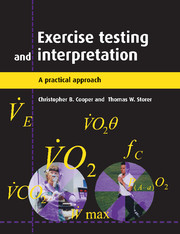Book contents
- Frontmatter
- Contents
- Preface
- 1 Purpose
- 2 Instrumentation
- 3 Testing methods
- 4 Response variables
- 5 Data integration and interpretation
- 6 Illustrative cases and reports
- Appendix A Glossary (terms, symbols, definitions)
- Appendix B Calculations and conversions
- Appendix C Reference values
- Appendix D Protocols and supplemental materials
- Appendix E Frequently asked questions
- Index
4 - Response variables
Published online by Cambridge University Press: 13 August 2009
- Frontmatter
- Contents
- Preface
- 1 Purpose
- 2 Instrumentation
- 3 Testing methods
- 4 Response variables
- 5 Data integration and interpretation
- 6 Illustrative cases and reports
- Appendix A Glossary (terms, symbols, definitions)
- Appendix B Calculations and conversions
- Appendix C Reference values
- Appendix D Protocols and supplemental materials
- Appendix E Frequently asked questions
- Index
Summary
Introduction
This chapter is a compendium of variables collected during different types of exercise test. Each variable is defined and its derivation and significance explained. For many of the variables, a normal data set is used to illustrate responses to the type of incremental protocol described in Figure 4.4 (A and B). Reference values are given for normal responses and various types of abnormal response are illustrated. The style of symbols used throughout this book is that recommended by the international scientific community. When new symbols are introduced they generally reflect established conventions. Some symbols represent a departure from previous usage but only when it seems necessary based on logic and consistency. A complete list of the recommended symbols can be found in Appendix A along with their definitions.
Variables of the exercise response
Endurance time (t)
Definition, derivation, and units of measurement
Endurance time quantifies exercise duration for defined constant and incremental work rate protocols as well as variable work rates such as walking and running tests. Endurance time represents the total time of exercise excluding the warm-up period and is often used with walking or running distance (dW or dR) to calculate walking or running velocity (see below).
Time is one of the most important primary variables during exercise testing. The units of measurement are minutes or seconds.
Normal response
Constant work rate exercise
Endurance time for constant work rate exercise varies inversely with the percentage of maximum work rate used for that specific mode of exercise.
Information
- Type
- Chapter
- Information
- Exercise Testing and InterpretationA Practical Approach, pp. 93 - 148Publisher: Cambridge University PressPrint publication year: 2001
Accessibility standard: Unknown
Why this information is here
This section outlines the accessibility features of this content - including support for screen readers, full keyboard navigation and high-contrast display options. This may not be relevant for you.Accessibility Information
- 3
- Cited by
